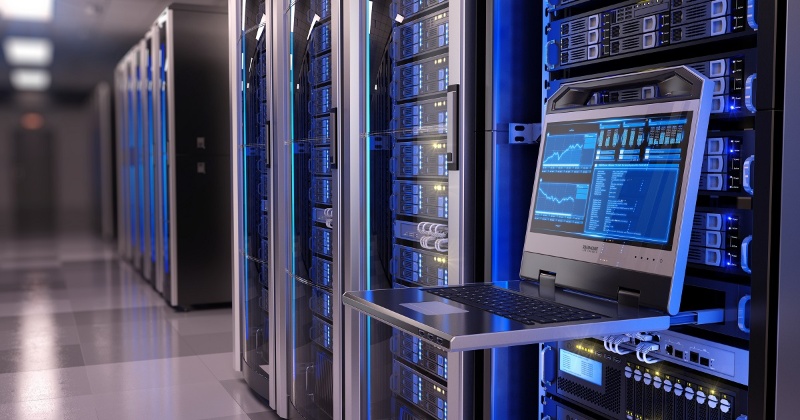1. The GPU Identity Crisis: Workstation or Gaming for AI?
The AI boom has companies scrambling for GPU power, blurring lines between professional workstation cards and consumer gaming GPUs. Can that affordable RTX 4090 really replace a $5,000 workstation GPU for training models? While raw specs tempt budget-conscious teams, AI enterprises face a critical dilemma: Stability isn’t optional. This is where WhaleFlux transforms the conversation—delivering managed reliability regardless of your GPU’s origin.
2. Under the Hood: Key Differences Between Workstation & Gaming GPUs
Understanding these GPUs starts with their DNA:
Workstation GPUs (e.g., NVIDIA RTX 5000 Ada):
Purpose:
Precision & reliability for mission-critical work.
Key Features:
- ECC Memory: Corrects data errors mid-calculation (vital for days-long AI training).
- Certified Pro Drivers: Rigorously tested for stability with professional apps (fewer crashes).
- vGPU Support: Lets one physical GPU serve multiple users (ideal for cloud/remote teams).
- Long-Term Support: 3-5+ years of driver updates and warranties.
AI Advantage:
Built for 24/7 operation with zero tolerance for errors.
Gaming GPUs (e.g., NVIDIA RTX 4090):
Purpose:
Maximizing frames-per-second for gamers.
Key Features:
- Raw FP32 Power: High theoretical speed for single-precision math (common in AI).
- Cost Efficiency: More TFLOPS per dollar upfront.
- Gaming Tech: DLSS/FSR (useless for AI).
AI Limitations:
- No ECC: Risk of silent data corruption crashing long jobs.
- Unstable Drivers: Consumer drivers often glitch under heavy compute loads.
- No Virtualization: Can’t share one GPU across users.
The Core Divide: Workstation GPUs prioritize accuracy and uptime; Gaming GPUs prioritize peak speed per dollar.
3. AI Realities: Where Each GPU Type Fits (and Fails)
Choose wisely—your GPU impacts success:
Workstation GPUs Shine In:
- Production AI Systems: Running customer-facing chatbots or medical diagnosis models (ECC prevents dangerous errors).
- Large Model Training: Training LLMs for days/weeks (stability is non-negotiable).
- Multi-User Environments: Cloud platforms or team labs (vGPU enables sharing).
Gaming GPUs Can Fit (With Heavy Caveats):
- Prototyping/R&D: Testing small models on a single developer’s PC.
- Low-Stakes Inference: Internal tools where a crash isn’t critical.
- Budget Experiments: Fine-tuning models under 8GB VRAM.
- Risks:
Driver crashes corrupting days of training.
No ECC causing unexplainable model failures.
Impossible to integrate into shared data centers.
The Hidden Tax: Underutilizing a $4,000 workstation GPU wastes money—but a $1,600 gaming GPU crashing your cluster costs far more in lost time.
4. The Mixed Fleet Chaos: When Worlds Collide
Most AI teams use both—T4s for inference, RTX 4090s for dev, A100s for training. This hybrid approach creates operational hell:
- Driver Conflicts: Workstation (Pro) and Gaming (Game Ready) drivers battle for control.
- Library Meltdowns: CUDA versions that work on an RTX 5000 Ada crash a 4090.
- Scheduling Imbalance: Expensive H100s sit idle while gaming GPUs overload.
- The “Doom the Dark Ages” Effect: Teams waste 40% of their time debugging GPU errors instead of building AI.
Result: Mixing GPUs erases cost savings and risks project failure. Stability becomes a luxury.
5. WhaleFlux: Taming the Hybrid GPU Beast
WhaleFlux is the intelligent control layer for all your NVIDIA GPUs—whether it’s a workstation RTX 5000, a gaming RTX 4090, or a data center H100. Here’s how it solves the chaos:
Solving Hybrid Chaos:
- Conflict Elimination: WhaleFlux uses hardware-level isolation. It runs RTX 4090 tasks in sealed containers so their drivers never interfere with workstation or H100 workloads.
- Intelligent Orchestration: Need ECC memory? WhaleFlux auto-routes jobs to workstation GPUs. Need raw FP32 power? It taps idle RTX 4090s.
- Maximized Utilization: WhaleFlux’s bin-packing fills every gap—using a gaming GPU for preprocessing while an H100 runs heavy training.
Unlocked Value:
- Safely Use Gaming GPUs: Deploy RTX 4090s for batch jobs without destabilizing production.
- Protect Workstation ROI: Ensure critical tasks always get ECC memory and certified drivers.
- Slash Costs by 30%+: Eliminate idle cycles and prevent costly crashes.
“WhaleFlux lets us safely use RTX 4090s for prototyping while reserving our A100s for client workloads. Our GPU costs dropped 40%.”
– AI Infrastructure Lead, WhaleFlux Customer
6. The WhaleFlux Advantage: Unified Power, Flexibility & Control
WhaleFlux works with any mix of NVIDIA GPUs:
Hardware Agnostic:
Manage H100, H200, A100, RTX 4090 (gaming), and workstation GPUs (RTX 5000 Ada/Quadro) in one dashboard.
Optimized Acquisition:
- Purchase: Maximize uptime on owned workstation/data center GPUs.
- Rent: Access H100/H200/A100/RTX 4090 via WhaleFlux (*1-month min. rental—no hourly billing*).
The Outcome:
A stable, cost-efficient cluster where every GPU—whether a $500 T4 or a $40,000 H100—does what it does best.
7. Choosing Wisely, Managing Smarter: The AI Infrastructure Edge
The verdict is clear:
- Workstation GPUs are essential for reliable production AI.
- Gaming GPUs offer budget power for prototyping—if isolated properly.
But hardware is only 50% of the solution. Without intelligent orchestration, even the best GPUs become expensive paperweights. WhaleFlux is the force multiplier that lets you:
- Safely leverage cost-efficient gaming GPUs
- Guarantee stability for mission-critical workloads
- Turn GPU sprawl into a unified competitive advantage
Ready to transform your GPU chaos into AI efficiency?
➡️ Optimize your mixed fleet (workstation + gaming + data center)
➡️ Rent H100/H200/A100/RTX 4090 (min. 1 month) managed by WhaleFlux
Stop choosing between cost and stability. Start managing smarter.
👉 Schedule Your WhaleFlux Demo Today
FAQs
1. What is the core difference between a workshop GPU and a gaming GPU from NVIDIA? Does WhaleFlux support both types?
The fundamental distinction lies in their design goals and hardware/software optimizations:
- Workshop GPU (e.g., NVIDIA A100, H100, H200, RTX A5000): Built for professional workloads like AI training/inference, 3D rendering, scientific computing, and engineering simulation. Key features include ECC (Error-Correcting Code) memory for data accuracy, high double-precision (FP64) or tensor computing power, ISV (Independent Software Vendor) certifications for professional software compatibility, and 24/7 stability for enterprise-grade tasks.
- Gaming GPU (e.g., NVIDIA RTX 4090, 4060, 3080): Optimized for consumer gaming—prioritizes high frame rates, real-time ray tracing (RTX cores), and entertainment-focused features. Typically lacks ECC memory, has lower FP64 performance, and no specialized optimizations for professional workloads.
WhaleFlux fully supports both workshop and gaming GPUs from NVIDIA’s entire product lineup. Customers can purchase or lease (hourly rental not available) the right type based on their needs—workshop GPUs for mission-critical professional tasks, and gaming GPUs for cost-sensitive small-scale AI or development workloads.
2. In terms of performance metrics (memory, computing power, reliability), how do NVIDIA workshop GPUs and gaming GPUs compare? How does WhaleFlux enhance their utility?
Key performance and reliability differences, plus WhaleFlux’s optimization value:
| Metric | NVIDIA Workshop GPU (e.g., A100, H200) | NVIDIA Gaming GPU (e.g., RTX 4090, 4060) |
| Memory | Large-capacity ECC GDDR6/GDDR6X (e.g., A100: 40GB, H200: 141GB) | Non-ECC GDDR6/GDDR6X (e.g., 4090: 24GB, 4060: 8GB) |
| Computing Power Focus | Tensor cores for AI, FP64/FP32 for simulation | CUDA cores/RTX cores for gaming/light AI |
| Reliability | 7×24 operation, ECC error correction | Consumer-grade durability (not for 24/7 workloads) |
| Software Compatibility | ISV-certified for professional tools (e.g., PyTorch, SolidWorks) | Optimized for games, limited professional certifications |
WhaleFlux maximizes their potential through intelligent cluster management: For workshop GPUs, it optimizes multi-GPU cluster utilization (e.g., load balancing for A100/H200 clusters) to reduce cloud computing costs while boosting LLM deployment speed. For gaming GPUs, it mitigates limitations like non-ECC memory via real-time error monitoring and task scheduling, making them viable for lightweight AI inference or developer testing.
3. For AI enterprises, when should they choose an NVIDIA workshop GPU over a gaming GPU (or vice versa) via WhaleFlux?
The choice depends on workload complexity, reliability requirements, and cost constraints:
- Choose Workshop GPUs (e.g., A100, H100, RTX A5000) if: You’re running large-scale AI training (e.g., 100 – billion – parameter LLMs), mission-critical inference, scientific computing, or professional rendering. These tasks demand ECC memory, high tensor/FP64 performance, and 24/7 stability—non-negotiable for enterprise operations.
- Choose Gaming GPUs (e.g., RTX 4090, 4060) if: You’re building small-scale AI prototypes, running lightweight inference (e.g., chatbots for small businesses), or need a cost-effective developer workstation. They offer sufficient FP32/tensor performance for entry-level AI tasks at a lower price point.
WhaleFlux simplifies this decision with flexible deployment: Enterprises can start with gaming GPUs for initial development and seamlessly upgrade to workshop GPUs (e.g., H200, A100) via WhaleFlux as their AI models scale—no need to restructure their cluster architecture.
4. What specific NVIDIA workshop and gaming GPU models does WhaleFlux offer, and how does it support seamless switching between the two types?
WhaleFlux provides access to NVIDIA’s full range of workshop and gaming GPUs, including but not limited to:
- Workshop GPUs: H100, H200, A100, RTX A6000, RTX A5000, A4000
- Gaming GPUs: RTX 4090, 4080, 4070 Ti, 4060, 3090, 3080
Seamless switching is enabled by WhaleFlux’s unified cluster management platform:
- If you initially deploy gaming GPUs (e.g., RTX 4090) for small-scale AI and later need more power for training, WhaleFlux can integrate workshop GPUs (e.g., A100) into your existing cluster without disrupting ongoing tasks.
- The tool’s intelligent resource scheduler automatically distributes workloads across the two GPU types—offloading heavy training to workshop GPUs and lightweight inference to gaming GPUs—optimizing both performance and cost.
5. How does WhaleFlux help balance cost and performance when enterprises use NVIDIA workshop or gaming GPUs for AI workloads?
WhaleFlux delivers cost-efficiency and performance optimization through three key capabilities:
- Cluster Utilization Optimization: By pooling workshop and gaming GPUs into a unified cluster, WhaleFlux eliminates resource idleness—e.g., allocating underutilized A100s to urgent inference tasks or using RTX 4060s for non-critical model testing. This reduces overall cloud computing costs by up to 35% compared to standalone GPU deployments.
- Flexible Procurement: WhaleFlux offers purchase or long-term lease options (no hourly rental) for both GPU types, allowing enterprises to avoid over-investing in expensive workshop GPUs when gaming GPUs suffice. For example, startups can lease RTX 4090s for prototyping and only purchase H200/A100s once they scale.
- LLM Deployment Acceleration: Regardless of GPU type, WhaleFlux’s built-in LLM optimization engine speeds up model deployment by 50%+ and enhances stability via cluster fault tolerance. For workshop GPUs, this means faster training cycles; for gaming GPUs, it ensures reliable lightweight inference without compromising performance.
All solutions are exclusive to NVIDIA GPUs, ensuring compatibility and maximizing the value of your NVIDIA hardware investment.

